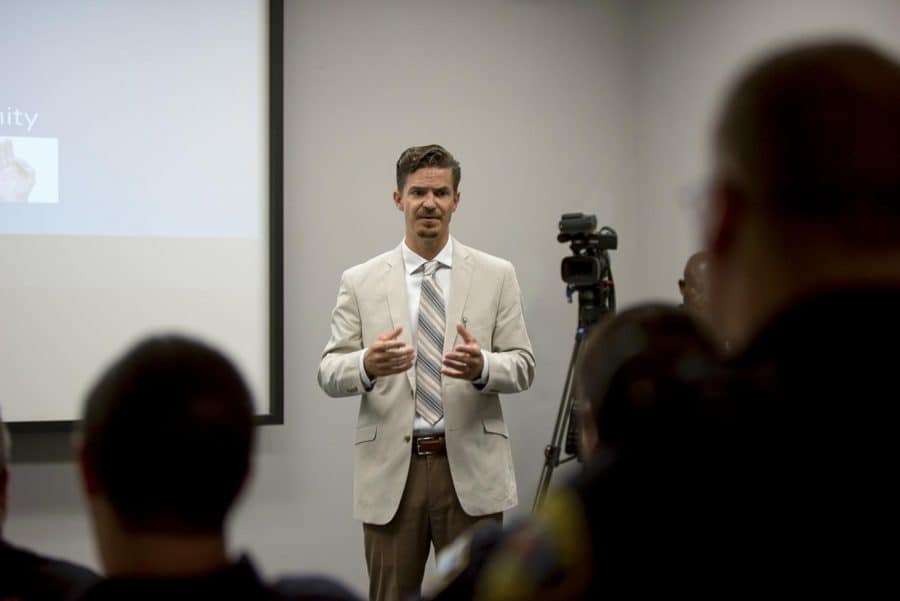PSA calls for proper nonverbal police training
February 18, 2019
For Kent Schafer, a doctoral student in the UA Department of Psychology, every encounter with law enforcement officers begins with a risk.
Verbal commands are paramount in these situations, but Schafer is deaf. He said often, officers demand that he read lips, or they do not have the patience to write back and forth. Nor does every deaf citizen have the ability to read or write English.
“I hope future law enforcement officers on college campuses and the community will consider contacting their training officer or their local state association for the deaf with additional requests to learn nonverbal commands so we can build a better future for the deaf and hearing citizens,” Schafer said in an email.
To spread awareness of the issue, The Center for Public Television and Darrin Griffin, UA assistant professor of communication studies, have joined forces in creating a public service announcement intended for law enforcement officers to gain awareness and learn proper training for communicating with deaf and partially deaf citizens.
The PSA was uploaded to Vimeo on Feb. 1, and it now has been posted on various social media outlets as a part of Griffin’s ongoing effort to spread further awareness. Griffin said as a professor, he had the ability to raise funds and produce this video, so he coordinated it. The video features UAPD officers, Tuscaloosa Police Department (TPD) officers and deaf citizens from the community serving as actors.
“The goal is to take a grassroots approach to reach police officers who have not had this type of training and to raise awareness,” Griffin said.
Schafer played in the video as a deaf community advocate. He said it was a learning experience for the film crew, the interpreter and the person interviewing him, as they all had to figure out how to work together to create an effective message.
“As the sole deaf student on the campus of 38,000 students, I am an extreme outlier,” Schafer said in an email. “The use of American Sign Language is considered artistic and rendered in a 3D atmosphere, whereas English is more linear and 2D-like. It was professional of them to allow me to type out my own thoughts in an English equivalency. I felt that I was represented well in my voice.”
TPD Sgt. Lachlan T. Chronister, who was also featured in the video, said the department usually provides great training as well as officers with skill sets for interacting with Spanish- and German-speaking citizens, but they lack training when working with the deaf community.
“We have such a large Hispanic population in this country, so we have multiple linguists,” Chronister said. “For us locally, we have some people who speak German because we have a Mercedes plant. So these are benefits to us, but we don’t think about sign language or how to communicate with the deaf at all.”
Training to communicate with partially deaf citizens is not required in every state, so Griffin said this is a timely issue that has been ongoing. This video is just one part of a bigger puzzle of trying to serve the deaf and partially deaf community.
In September 2016, Griffin organized a pilot workshop on campus to educate local law enforcement officers about efficiently communicating with the deaf community. The officers were exposed to some basic training, including sign language, which could be applied in future interactions for fewer misunderstandings.
“I would say this would almost be an awareness for people outside of our agency to say others are already trying to do this,” Chronister said. “When another agency does it, others start to go, ‘Hey, maybe we need to be doing this, too,’ and I think from my end of things, that’s kind of my hope.”










